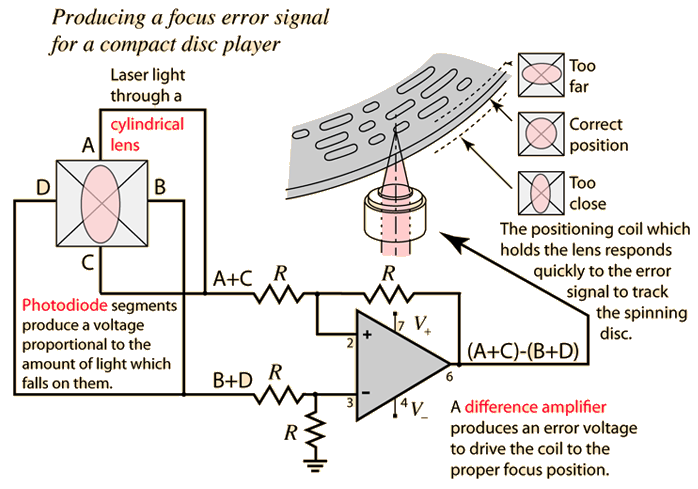 |
Cylindrical Lens for PositioningA clever use of a cylindrical lens generates a correction signal to position the main focusing lens for the detector in a compact disc player. The combination of a symmetric lens and a cylindrical lens produces a circular beam at only one distance past the cylindrical lens. A segmented photodiode arrangement can detect whether the beam is circular and generate an error voltage to reposition the main lens so that it is. The error voltage drives a coil which can rapidly reposition the lens in response to changes in distance to the CD as it rotates. |
CD concepts
Sound reproduction concepts
Reference
Rossing
Physics Teacher, Dec. 87
| HyperPhysics***** Sound ***** Optics | R Nave |
